 CLIFTON PUGH (1924-1990) was an Australian landscape and portrait painter. His engagement with the bush, however, stands in sharp contrast to the familiar landscapes of artists such as Arthur Streeton and Frederick McCubbin. Continue reading “CLIFTON PUGH, LANDSCAPE and SUFFERING”
CLIFTON PUGH (1924-1990) was an Australian landscape and portrait painter. His engagement with the bush, however, stands in sharp contrast to the familiar landscapes of artists such as Arthur Streeton and Frederick McCubbin. Continue reading “CLIFTON PUGH, LANDSCAPE and SUFFERING”
ST MARY OF THE ANGELS CHAPEL ROSEBANK, FIVE DOCK, NSW
 On Monday 11 January 2020, the last of the pieces of furniture were delivered for the refurbishment and reordering of the Rosebank Chapel. These are the primary pieces that will become sacred in the coming years as we, the People of God, do the ritual acts of Continue reading “ST MARY OF THE ANGELS CHAPEL ROSEBANK, FIVE DOCK, NSW”
On Monday 11 January 2020, the last of the pieces of furniture were delivered for the refurbishment and reordering of the Rosebank Chapel. These are the primary pieces that will become sacred in the coming years as we, the People of God, do the ritual acts of Continue reading “ST MARY OF THE ANGELS CHAPEL ROSEBANK, FIVE DOCK, NSW”
A GOOD PARISH CHURCH OF 1987
 Melbourne architect GREGORY BURGESS (b. 1945) is known internationally for public architecture which both expresses the spiritual and creates a unifying communal experience. His work has included arts and visitor centres, educational and health facilities. Continue reading “A GOOD PARISH CHURCH OF 1987”
Melbourne architect GREGORY BURGESS (b. 1945) is known internationally for public architecture which both expresses the spiritual and creates a unifying communal experience. His work has included arts and visitor centres, educational and health facilities. Continue reading “A GOOD PARISH CHURCH OF 1987”
ABORIGINAL STATIONS OF THE CROSS
 This set of Stations of the Cross was commissioned by the Aboriginal Catholic Ministry of Victoria in 2017 and are arranged along the main wall of their chapel in Thornbury, Melbourne. They were imagined, dreamed and painted by John Dunn, an Olkola/Djabaguy man from Far North Queensland.
This set of Stations of the Cross was commissioned by the Aboriginal Catholic Ministry of Victoria in 2017 and are arranged along the main wall of their chapel in Thornbury, Melbourne. They were imagined, dreamed and painted by John Dunn, an Olkola/Djabaguy man from Far North Queensland.
A PLATYPUS STOLE AND A PELICAN CHASUBLE
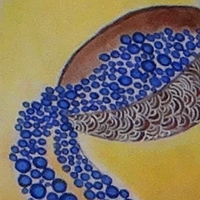 Charles Balnaves is Parish Priest at St Joseph’s parish in Meredith, a town 100km by road west of Melbourne. He had been involved with the Aboriginal Catholic Ministry (ACM) in the archdiocese for ten years. He wrote of the vestments designed by the ACM specifically to be placed into his custody on the occasion of his ordination. Continue reading “A PLATYPUS STOLE AND A PELICAN CHASUBLE”
Charles Balnaves is Parish Priest at St Joseph’s parish in Meredith, a town 100km by road west of Melbourne. He had been involved with the Aboriginal Catholic Ministry (ACM) in the archdiocese for ten years. He wrote of the vestments designed by the ACM specifically to be placed into his custody on the occasion of his ordination. Continue reading “A PLATYPUS STOLE AND A PELICAN CHASUBLE”
A BOOK OF GOSPELS
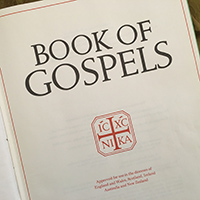 According to ancient tradition in the Church, the Book of Gospels is carried in the entrance procession at Mass, placed on the altar, and then ceremonially taken to the ambo for the proclamation of the Gospel. The Book of Gospels has always been given special respect and dignity in the Church because it is an icon of the presence of Christ to the liturgical assembly. Continue reading “A BOOK OF GOSPELS”
According to ancient tradition in the Church, the Book of Gospels is carried in the entrance procession at Mass, placed on the altar, and then ceremonially taken to the ambo for the proclamation of the Gospel. The Book of Gospels has always been given special respect and dignity in the Church because it is an icon of the presence of Christ to the liturgical assembly. Continue reading “A BOOK OF GOSPELS”
WILLIAM WARDELL’S LADYE CHAPEL
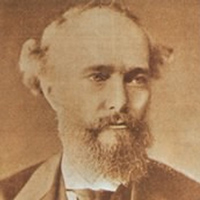 St Patrick’s Cathedral, Melbourne, Victoria
St Patrick’s Cathedral, Melbourne, Victoria
The nineteenth-century Gothic Revival Cathedral of St Patrick’s, Melbourne, Victoria (1858-1899, 1930s, 1970s, 1990s) is a place for Christian worship. It is a house of prayer, a dwelling-place of the Lord among God’s people. St Patrick’s has been part of my life since before I was born. In 1950, my Swiss-Polish parents, new post-WWII immigrants, were married in the cathedral sacristy by a Polish priest. The architect of the cathedral, William Wilkinson Wardell (1823-1899), became the topic of my doctoral research in the 1980s; and in the early 2000s my youngest daughter was married in the cathedral. It was in the 1990s that I began visiting the Ladye Chapel whenever I was in Melbourne. My younger brother was diagnosed with cancer in his mid-twenties and I found great comfort in simply being present with Mary, mother of us all.
TOM BASS: in his own words
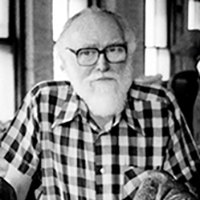 The Australian sculptor, Thomas Dwyer Bass am, was born in Lithgow in 1916. After various jobs during the Depression and army service during WWII, he began his career as a sculptor on graduating from the National Art School in 1948. Prior to the war, Bass attended Dattilo Rubbo’s art school; it was here he was initiated into the principles of art. At the National Art School he came under the influence of Lyndon Dadswell whose assistant he became during 1949-1950. This was followed by a three-year stint of teaching there. From 1951-1964 he held various executive positions with the Sculptors’ Society, of which he was a founding member. Continue reading “TOM BASS: in his own words”
The Australian sculptor, Thomas Dwyer Bass am, was born in Lithgow in 1916. After various jobs during the Depression and army service during WWII, he began his career as a sculptor on graduating from the National Art School in 1948. Prior to the war, Bass attended Dattilo Rubbo’s art school; it was here he was initiated into the principles of art. At the National Art School he came under the influence of Lyndon Dadswell whose assistant he became during 1949-1950. This was followed by a three-year stint of teaching there. From 1951-1964 he held various executive positions with the Sculptors’ Society, of which he was a founding member. Continue reading “TOM BASS: in his own words”
MARY MACKILLOP IN ADELAIDE
 The bronze sculptures of Judith Rolevink at St Francis Xavier Cathedral, Adelaide.
The bronze sculptures of Judith Rolevink at St Francis Xavier Cathedral, Adelaide.
The first sculpture dates from 2009 and stands beside the cathedral in Mary MacKillop Plaza. It is a narrative work that shows Mary holding hands with two children as they walk together. The trio steps forward joyfully. Continue reading “MARY MACKILLOP IN ADELAIDE”
CREATION WINDOWS – Cathedral Cairns
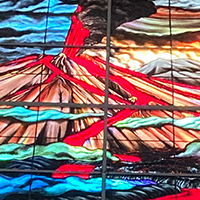 Embracing local holidays in Queensland recently, I found myself in St Monica’s Cathedral in Cairns for the first time in over twenty-five years. I was at last able to behold the magnificent creation windows made in the second half of the 1990s by Gerry Cummins and Jill Stehn. There are twelve windows on each side of the nave, each one measuring 6.5 metres by 1.6 metres. They are a monumental presentation of the Genesis story of the creation of the world, and include many scientific elements in the design together with frequent visual references to the Cairns topography, flora and fauna. They create a dynamic context for liturgy which is both cosmic and local.
Embracing local holidays in Queensland recently, I found myself in St Monica’s Cathedral in Cairns for the first time in over twenty-five years. I was at last able to behold the magnificent creation windows made in the second half of the 1990s by Gerry Cummins and Jill Stehn. There are twelve windows on each side of the nave, each one measuring 6.5 metres by 1.6 metres. They are a monumental presentation of the Genesis story of the creation of the world, and include many scientific elements in the design together with frequent visual references to the Cairns topography, flora and fauna. They create a dynamic context for liturgy which is both cosmic and local.
